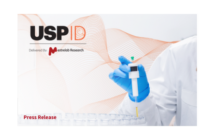Quantification software packages include the proven concepts of compensating signal intensity according to changes in acquisition parameters such as spectral scan number, receiver gain, instrument-specific manipulations of signal intensity, and changes in fully tuned and matched pulse lengths (e.g., PULCON1 - pulse length based concentration measurements, or Mnova qNMR2).
However, the inherent accuracy of the quantification and concentration measurements are mostly determined by how well the user has controlled and standardised the conditions for recording the external standard NMR in comparison to the sample(s) of interest. It is generally easy to control these variables and some important ones are outlined here.
1.Tuning and matching
Accurate comparisons between sample concentrations cannot be made if the tuning and matching conditions are not identical.
If you rely on automatic tuning and matching, you need to measure and understand the reproducibility of this for your particular instrument - some automatic protocols may introduce extra errors (say ±10%) in signal intensity. Often these errors can be more or less eliminated by more accurately optimising tuning and matching manually, so that standard reference samples whose spectra have been recorded weeks before can still be used to quantify samples that have just been run.
For reproducibility, you should also ensure that the sample is not spinning both for the reference sample and the sample of interest. Spinning (rotation) can introduce oscillations that make it difficult to achieve fully optimised, consistent tuning and matching.
Processing software cannot correct for changes in the 90° pulse length which are not run under identical tuning and matching conditions. The only situation where this is definitely known and software corrections can be used is at the fully optimised point, where the probe is ideally tuned and matched to the frequency/50 Ohm spectrometer circuit. So, if the probe pulse length is incorrect by 10% due to tuning and matching errors between the reference and sample of interest, this does not mean that your signal intensity will also be 10% out – it may be more and it may be less, but software cannot accurately compensate.
However, if you are comparing the same resistive load NMR reference sample in the same organic solvent as the sample of interest (e.g. both in DMSOd6), it is possible to do so without optimising the tuning and matching. It doesn't matter in this case that tuning and matching weren’t optimised, as both the reference and sample were still recorded under identical tuning and matching conditions. You will need to redetermine the CCF (Concentration Conversion Factor) for those instrument conditions.
Simply, record samples under the same conditions of tuning and matching as the reference (e.g. you record the reference immediately before or after the samples of interest) without adjusting the tuning and matching in between and you will have well controlled reference and sample conditions, enabling accurate comparisons.
Ensure that temperature control is not an issue. The probe temperature should be well controlled, and the sample requires time to temperature equilibrate before starting the NMR experiment. Check how long this takes for your instrument!
If the probe is correctly tuned and matched the software can correct for changes in the number of scans, receiver gain, and 90° pulse width
2.NMR Tubes
Use the same specification NMR tubes and bear in mind that the variability in volumes (say ±1% depending on specification) observed between reference and sample of interest will have an effect on measurements. Remember that the observed Absolute Intensities will be proportional to the amount of material in the probe, and variations in tube ID (Inner Diameter) will be a source of errors for samples at the same concentration.
In the figure we see the variability of apparent concentration for a single solution’s spectrum measured in 12 different tubes. These were Norell “High Throughput Plus” tubes having a quoted ID of 4.20mm ±1.2%.

3.Receiver Gain
Ensure you have a linear receiver (modern machines usually have a linear response) or, alternatively, use a fixed receiver gain. If you have a linear receiver, so long as the peaks of interest are not compromised by signal to noise they are simple to correct with multipliers and will then retain the same apparent concentration with change in receiver gain despite loss in the ratio of signal to noise - the signal scales with receiver gain, but the noise decreases dramatically at low receiver gains.
The figures show measured AIs for different receiver gain levels, and the closeness to the expected fit. You may want to try this for your spectrometer!


If you are unsure, simply use a fixed receiver gain (for Bruker spectrometers, RG=64 is often reasonable), which will not impact signal to noise significantly, but will still allow the collection of high dynamic range samples (up to ~5% H2O).
4.Use Identical Pulse Sequences
Beware comparing samples recorded with different pulse sequences. For example, a reference spectrum recorded using 'zg90' and the sample with 'zg30' can introduce errors. Software packages should flag this as an issue but normally cannot compensate for them.
5.Good NMR Practice
Ensure all the other essentials of good quantitative NMR housekeeping are in order – see Griffiths for a review of these issues3.
Conclusions
Using NMR to determine compound concentrations is a proven and accurate method. Excellent software tools exist to facilitate the analysis of the data, but correct results will only be reported if attention is paid to spectrum acquisition conditions. You should probably perform some basic checks on your equipment and revise your lab procedures!
Acknowledgement
We would like to thank Dr Richard Upton (GSK) for useful discussions, and suggesting this article.



